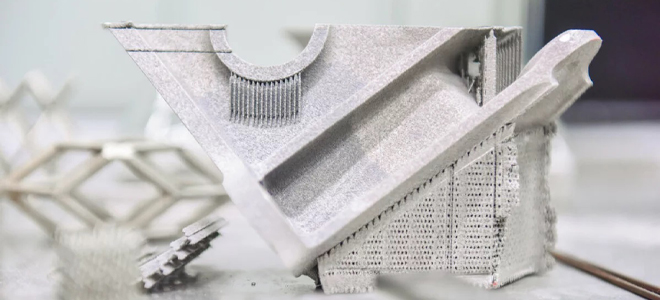
While 3D-printed aluminum parts are becoming increasingly common in the aerospace industry, any weaknesses in those parts can cause them to fail catastrophically. A new additive could help, by making the aluminum 1.5 times harder.
Developed by scientists at Russia’s NUST MISIS university, the additive is made up of tiny carbon nanofibers. These are produced as a byproduct of the processing of natural gas, and would ordinarily end up being disposed of – potentially becoming a form of pollution.
Instead, they’re added to powdered aluminum. In an existing process known as selective laser melting, a laser beam is used to melt that powder in a specific pattern, building objects up one layer of melted (and subsequently fused) aluminum at a time.
Ordinarily, temperature differences between those layers may cause the microstructure of the finished product to be inconsistent, with some layers ending up more porous than others. Because the carbon nanofibers are very thermally conductive, however, they’re reportedly able to distribute the laser heat more thoroughly and evenly.
As a result, the 3D-printed aluminum has a uniform low porosity, and is thus a claimed 1.5 times harder than aluminum printed from powder without the added nanofibers.
The research is being conducted in partnership with the Boreskov Institute of Catalysis, and is described in a paper that was recently published in the journal Composites Communications.
newatlas

